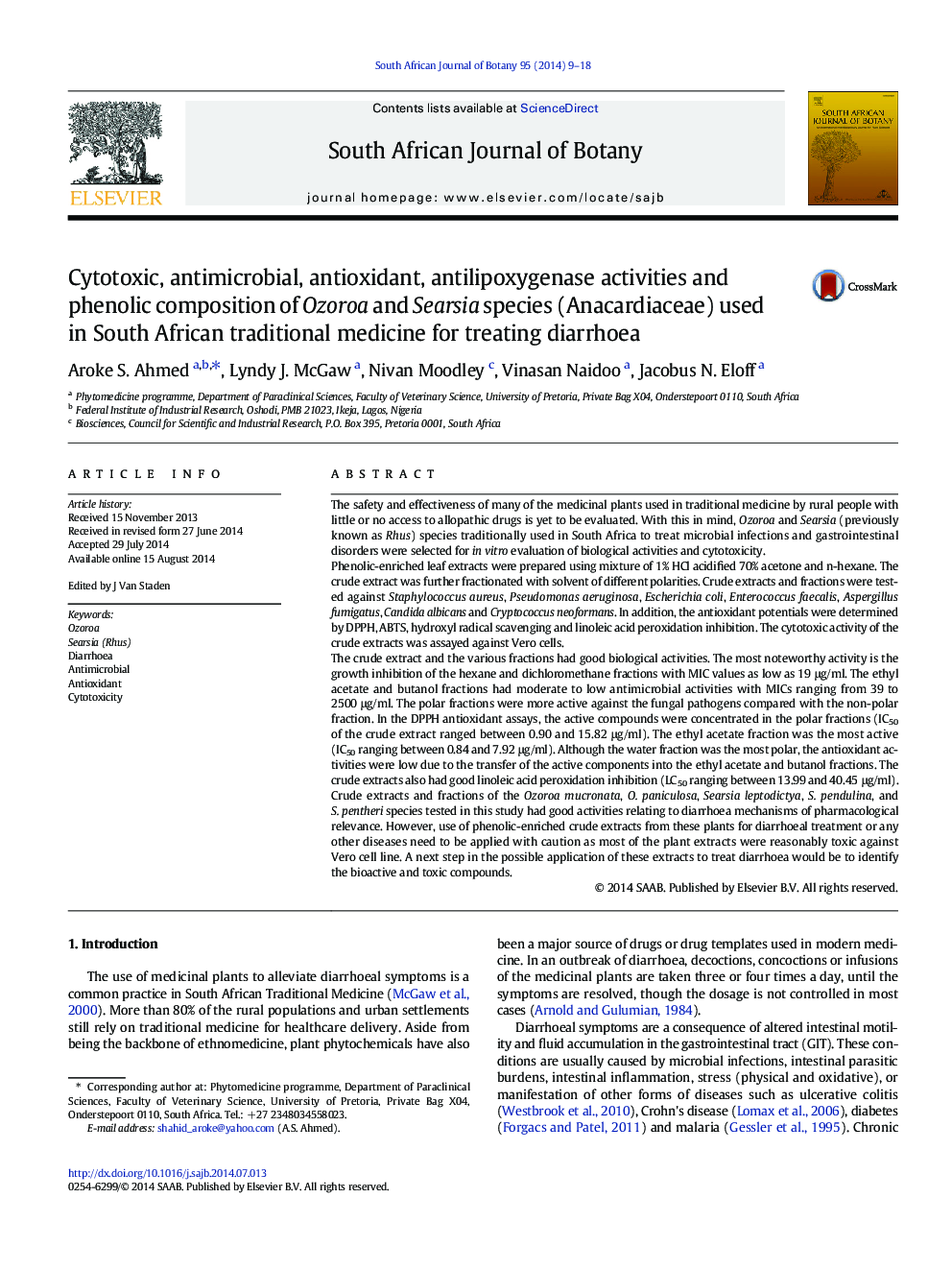| کد مقاله | کد نشریه | سال انتشار | مقاله انگلیسی | نسخه تمام متن |
|---|---|---|---|---|
| 4520631 | 1625163 | 2014 | 10 صفحه PDF | دانلود رایگان |

• Many plant species are used traditionally to treat diarrhoea in humans or animals.
• Many different biological activities may be responsible for the effect.
• We examined Anacardiaceae species that are active against Escherichia coli.
• Polarity of fractions had a strong effect on different activities.
• Some fractions may be useful but cytotoxicity may cause problems.
The safety and effectiveness of many of the medicinal plants used in traditional medicine by rural people with little or no access to allopathic drugs is yet to be evaluated. With this in mind, Ozoroa and Searsia (previously known as Rhus) species traditionally used in South Africa to treat microbial infections and gastrointestinal disorders were selected for in vitro evaluation of biological activities and cytotoxicity.Phenolic-enriched leaf extracts were prepared using mixture of 1% HCl acidified 70% acetone and n-hexane. The crude extract was further fractionated with solvent of different polarities. Crude extracts and fractions were tested against Staphylococcus aureus, Pseudomonas aeruginosa, Escherichia coli, Enterococcus faecalis, Aspergillus fumigatus, Candida albicans and Cryptococcus neoformans. In addition, the antioxidant potentials were determined by DPPH, ABTS, hydroxyl radical scavenging and linoleic acid peroxidation inhibition. The cytotoxic activity of the crude extracts was assayed against Vero cells.The crude extract and the various fractions had good biological activities. The most noteworthy activity is the growth inhibition of the hexane and dichloromethane fractions with MIC values as low as 19 μg/ml. The ethyl acetate and butanol fractions had moderate to low antimicrobial activities with MICs ranging from 39 to 2500 μg/ml. The polar fractions were more active against the fungal pathogens compared with the non-polar fraction. In the DPPH antioxidant assays, the active compounds were concentrated in the polar fractions (IC50 of the crude extract ranged between 0.90 and 15.82 μg/ml). The ethyl acetate fraction was the most active (IC50 ranging between 0.84 and 7.92 μg/ml). Although the water fraction was the most polar, the antioxidant activities were low due to the transfer of the active components into the ethyl acetate and butanol fractions. The crude extracts also had good linoleic acid peroxidation inhibition (LC50 ranging between 13.99 and 40.45 μg/ml).Crude extracts and fractions of the Ozoroa mucronata, O. paniculosa, Searsia leptodictya, S. pendulina, and S. pentheri species tested in this study had good activities relating to diarrhoea mechanisms of pharmacological relevance. However, use of phenolic-enriched crude extracts from these plants for diarrhoeal treatment or any other diseases need to be applied with caution as most of the plant extracts were reasonably toxic against Vero cell line. A next step in the possible application of these extracts to treat diarrhoea would be to identify the bioactive and toxic compounds.
Journal: South African Journal of Botany - Volume 95, November 2014, Pages 9–18